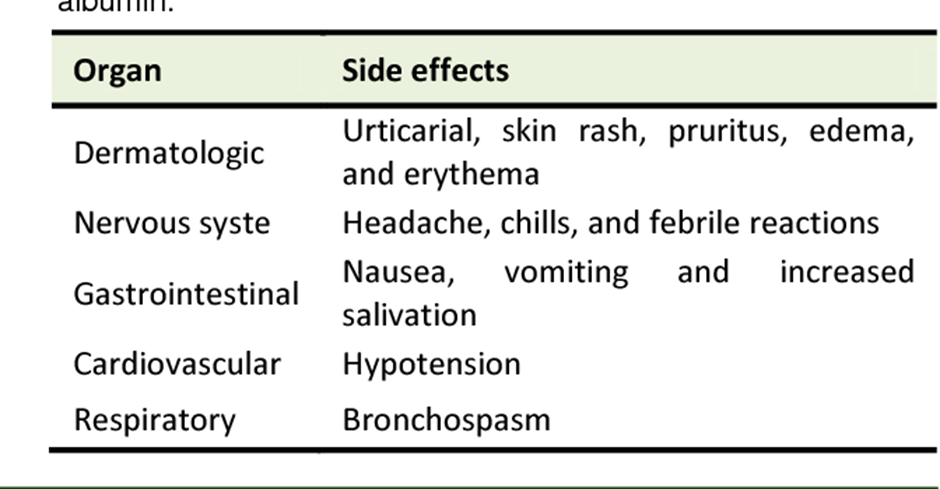A nurse is teaching a client who has a prescription for ferrous gluconate. Which of the following statements by the client indicates an understanding of the teaching?
"I should notify my provider if my stools turn black."
1 should take an antacid with this medication to prevent stomach upset."
should stay upright for at least 15 minutes after taking this medication."
should take this medication with 8 ounces of milk."
The Correct Answer is A
Choice A Reason:
"I should notify my provider if my stools turn black." This is the appropriate statement. Ferrous gluconate is an iron supplement commonly prescribed to treat or prevent iron deficiency anemia. When taking iron supplements, it's common for stools to become darker or even black in color. This change in stool color is due to the iron and is generally harmless. However, it's essential to inform the healthcare provider about this change because it can also indicate bleeding in the gastrointestinal tract, which requires evaluation.
Choice B Reason:
Taking an antacid with iron supplements can interfere with iron absorption. Antacids may decrease the absorption of iron in the stomach, so it's not recommended to take them together.
Choice C Reason:
While staying upright after taking certain medications can help prevent esophageal irritation or reflux, it's not specifically required with ferrous gluconate.
Choice D Reason:
Taking iron supplements with milk is also not recommended as milk and calcium-containing products can inhibit the absorption of iron. It's generally best to take iron supplements on an empty stomach or with vitamin C to enhance absorption, unless otherwise instructed by the healthcare provider.
Nursing Test Bank
Naxlex Comprehensive Predictor Exams
Related Questions
Correct Answer is C
Explanation
Choice A Reason:
Nausea is incorrect. Nausea is a common side effect of many medications, including antibiotics like amoxicillin. While it can be a side effect of an allergic reaction, it's also a general symptom that can occur due to various reasons, such as gastrointestinal upset or the direct effects of the antibiotic on the stomach lining. Nausea alone is less specific for indicating an allergic reaction compared to severe symptoms like laryngeal edema.
Choice B Reason:
Insomnia is incorrect. Insomnia, or difficulty sleeping, is not a typical manifestation of an allergic reaction to amoxicillin. Allergic reactions usually involve more immediate and visible symptoms such as skin rash, itching, swelling, difficulty breathing, or in severe cases, anaphylaxis. Insomnia is not a common symptom associated with allergic responses to antibiotics.
Choice C Reason:
Laryngeal edema is correct. Laryngeal edema, or swelling of the larynx, is a serious symptom of an allergic reaction known as anaphylaxis. This severe allergic reaction can be life-threatening due to its potential to obstruct the airway, leading to breathing difficulties.
Choice D Reason:
Cardiac dysrhythmia is incorrect. While medications can sometimes affect heart rhythms, cardiac dysrhythmia is not a common symptom of an allergic reaction to amoxicillin. Allergic reactions tend to manifest with more immediate symptoms like skin reactions, respiratory issues, or swelling rather than primarily affecting the heart rhythm.

Correct Answer is C
Explanation
Choice A Reason:
Oxygen saturation within this range is generally considered adequate and might not directly correlate with the administration of albumin.
Choice B Reason:
Decrease in protein is incorrect. Albumin infusions are meant to supplement protein levels in the blood, so a decrease in protein wouldn't be an expected finding.
Choice C Reason:
Increase in blood pressure is correct. Albumin infusions can potentially help increase blood volume, leading to an increase in blood pressure. In shock, where there's a significant decrease in blood pressure due to reduced circulating volume, administering albumin or other intravenous fluids can help restore blood volume and consequently raise blood pressure towards a more stable range.
Choice D Reason:
PaCO2 of 30 mm Hg is incorrect. PaCO2 levels are related to respiratory function and the amount of carbon dioxide in the blood. While shock can impact various physiological parameters, a PaCO2 level of 30 mm Hg alone might not be directly tied to the administration of albumin in shock.

Whether you are a student looking to ace your exams or a practicing nurse seeking to enhance your expertise , our nursing education contents will empower you with the confidence and competence to make a difference in the lives of patients and become a respected leader in the healthcare field.
Visit Naxlex, invest in your future and unlock endless possibilities with our unparalleled nursing education contents today
Report Wrong Answer on the Current Question
Do you disagree with the answer? If yes, what is your expected answer? Explain.
Kindly be descriptive with the issue you are facing.
